Juanita Oosthuizen was born in Calvinia and grew up in the Cape platteland. From an early age she experimented creatively with paper, cloth and plastic – questioning, directing, observing – never settling for that which she found aesthetically displeasing. In the 1990s she joined a corporate gifts company and was responsible for their packaging design. During this time, and after a visit to Europe, she discovered sheet polypropylene and used it successfully in packaging. In 1998 she started her own company – Pepper Plum Designs – manufacturing and designing for the corporate and retail markets using mainly PVC and sheet polypropylene. Her designs included stationery and household items, and she regularly exhibited new designs and products with Design Indaba. Since 2013 she has been working as a professional artist under the name ‘J by Juanita’ and creating minimalist works, capturing time and its experience.
See behind the scenes in the studio of Juanita Oosthuizen and read an exclusive interview with the artist about her minimalist paper artworks, hand-cut miniature chairs and signature black and white style.
Watch our film with the artist here:
Hello Juanita, tell us a bit about yourself and your background?
I'm Juanita Oosthuizen and I'm a paper artist.
Whilst I’m a qualified occupational therapist, I’ve always been a creator at heart. My journey as an artist/creator started as a product designer where I designed and manufactured mostly packaging for the wine and the cosmetic industry. My product range extended over 300 products, made out of a variety of different materials and included stationery, lights, handbags, carriers etc. I had my own shop, in Hermanus and supplied products to various retailers and wholesalers. I handed over this business to my children and I decided I want to do something on my own.
About 10 years ago I visited the Tate Modern in London and I saw an artist display only a small artwork in a huge hall. The artwork was of a little figure sweeping a big pile of sand and I was absolutely fascinated and inspired. I had been collecting small miniature objects my whole life, so I decided to embrace the world of art, as a full-time artist, featuring miniature figurines in my art. Each piece I create tells a story, and by using small figurines, I’m able to set the viewer up to interpret each story differently.
What do you think people should know about your art that they can't tell from looking at it?
Because my artwork is 3 dimensional and consists of very fine and intricate details, it is incredibly difficult to capture the essence of the work in a photograph. One has to view it in person to really appreciate and experience the story. The same ‘fine and intricate detail’ also takes hours to expertly assemble and build.
If you could only have one piece of art in your life, what would it be?
I would love to own a piece by Banksy.
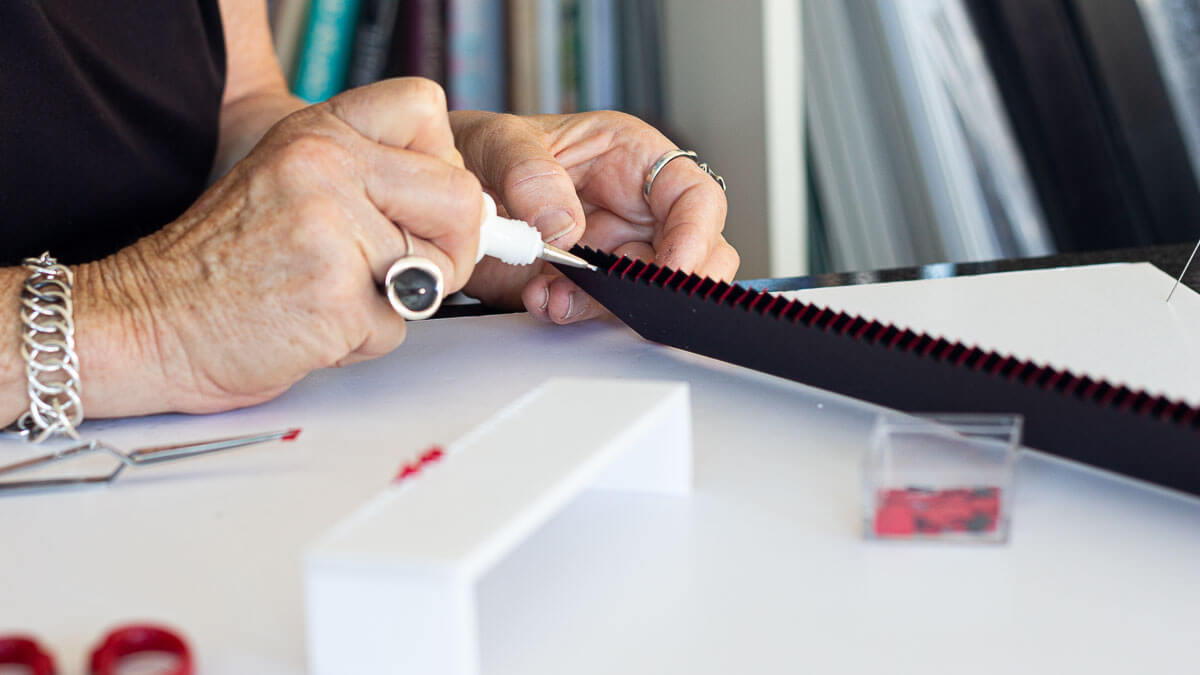
Can you pick three artists that you would be honoured to exhibit with and why?
I love William Kentridge. I was always very inspired by his work. I also identify with his work as his medium is paper.
I'm also very inspired by Dan Halter, as I do a lot of paper weaving too. He's a young guy who, through the use of paper weaving as a medium, challenges tough political subjects. I would love to be able to work with him.
Angela Glajcar is a German artist who creates large sculptures and installations out of paper. She plays with ripping the paper and creating shadows and I love the large scale and abstract shapes she creates.
Do you have a favourite or most meaningful work of your own?
‘Hexagon Perfection’.
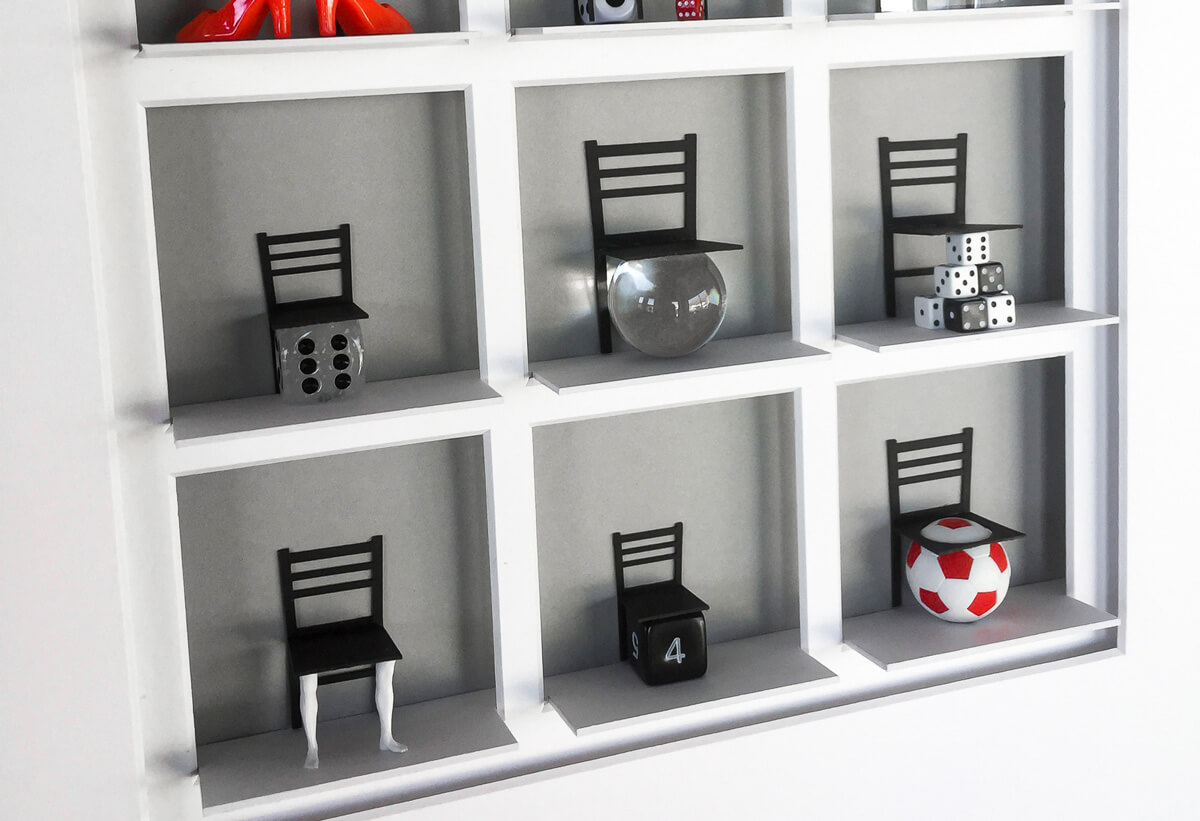
What is your creative process and your studio space like?
My creative process usually starts at night, when I cannot sleep. I get so many ideas and start to plan and conceptualize the next day’s work.
I like to be very organised and precise because I work with paper, so I’m constantly cleaning and clearing my workspace. I also find that I can’t start the day without everything being stored in the right place. Chaos and creativity just doesn’t go hand in hand for me.
I also live in my workspace. It is a small space but I love where I live and I love to have my studio and art right here. I used to have a separate studio space and worked there for eight years, but I find working from home allows me to start early to late without interruptions - and I’m flexible. If I can’t sleep, I can get straight into creating a piece I’ve been inspired by.
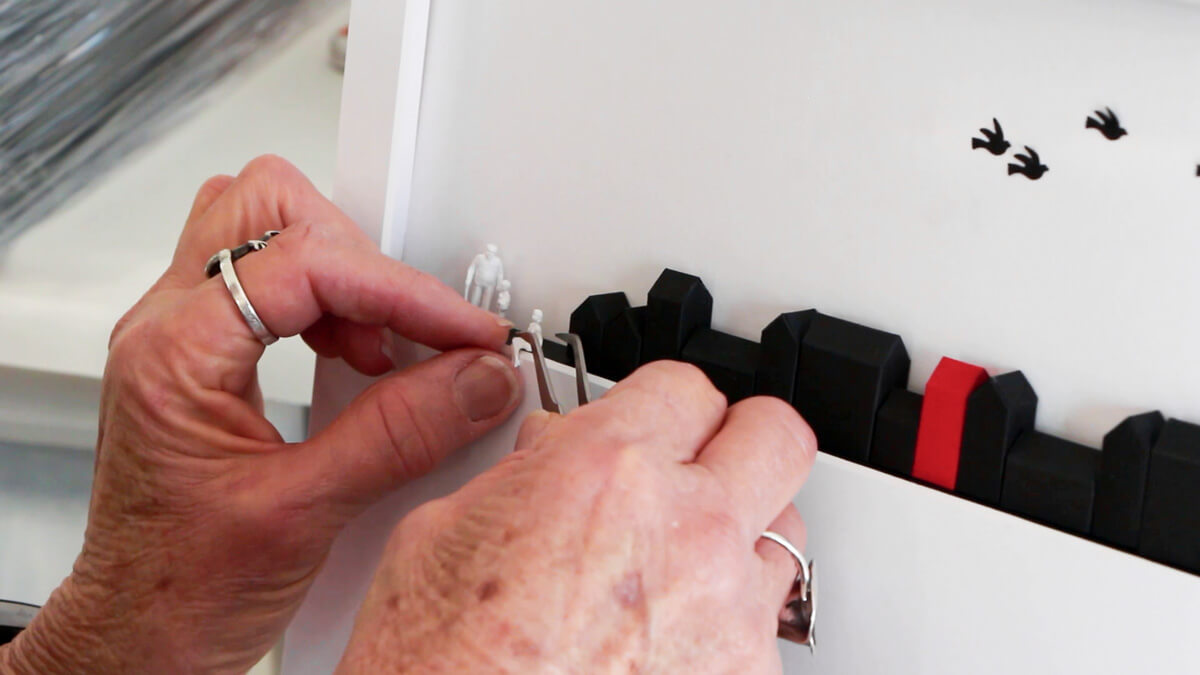
Can you tell us a bit more about the theme of chairs in your work?
In the last five years, I've used a lot of chairs in my work and it actually started with a paper weave that I did - which happens to be the biggest weave I've ever done - of a chair reflecting in the water.
My interest in chairs has taken such a wide turn in the past five years. I’ve worked with big and small chairs, and I’ve made them out of so many different materials! Cutting chairs out of paper by hand was such an exciting challenge and a huge accomplishment for me. I’ve also found that my fascination with chairs is not unique to me as often my artwork, featuring chairs, sell out quickly.
Through the years, I researched different styles and manufacturers of chairs and it is fascinating to learn about the different designs and dates of chairs. Some designs are timeless – there are chairs designed in1830 that we use and are still manufactured today. Also, designer chairs are so iconic. My work using Vitra design chairs won the Hermanus FynArts competition. I made 18 different kinds of designer chairs at a very small scale, so I think that was my first iconic piece.
I've also created a piece with a table surrounded by a lot of chairs because that is also a medium of conversation - sitting and talking.
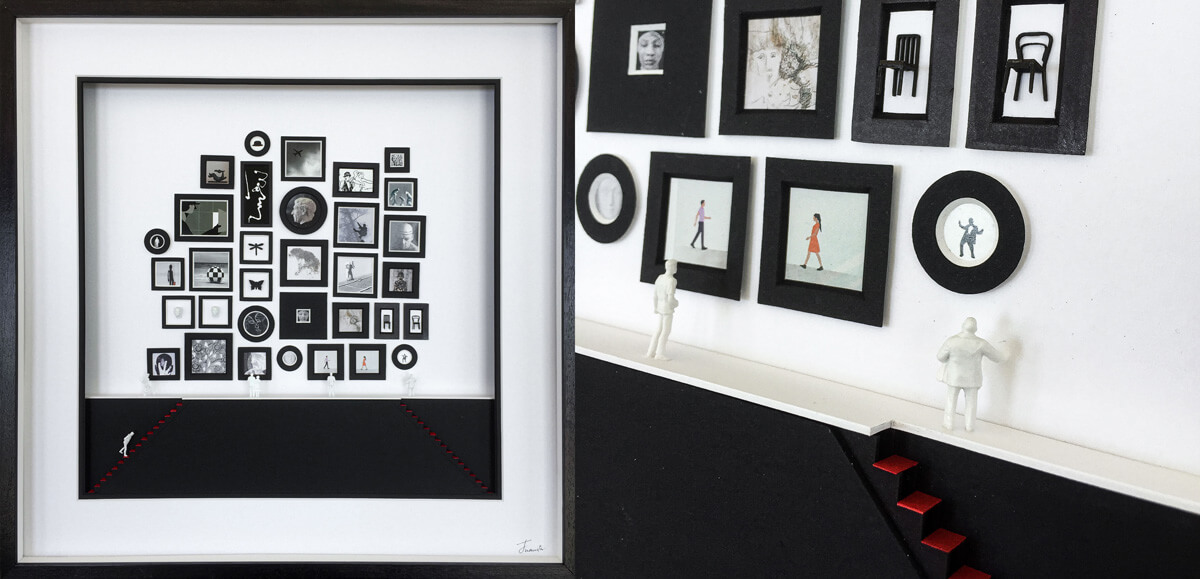
'The Art Gallery' by Juanita Oosthuizen, 48 x 48cm framed
What about your choice of colour palette?
I prefer working with black, white and/or shades of grey. Sometimes I add a pop of red for contrast. I have found that whenever I create artwork or elements with new colours its quite nerve-wracking for me - I just don’t feel comfortable. I also mainly wear black and white, so for me, art imitates life!
I’ve recently, however, started creating paper weaves using Blue Delft porcelain as inspiration, and naturally those pieces are very blue. Originally, it was quite daunting to challenge myself to think outside of the black-white-and-grey-box, but these pieces have proven to be incredibly popular and I’ve now woven about 20 - 25 plates in total.
Why are you so drawn to using paper in your art?
Paper is so versatile. I am fascinated with what paper can do and what I can do with paper. There is so much flexibility and versatility in a simple fold of paper.
Actually, the principle of a fold is being used as a simple solution to a complex problem in so many ways. In medicine, a small fold in metal is used for a stent in your heart. The fold is so minute and very similar to a paper fold but it has the ability to open a very small cavity in the human body. Similarly, astronauts use folds when travelling in outer space. Due to the limitation of space (excuse the pun) in their aircrafts, they often have to rely on instruments and equipment that can folded up incredibly small. I am just fascinated with all the ways the action of paper folding can be applied to so many aspects of our lifes, including technology.
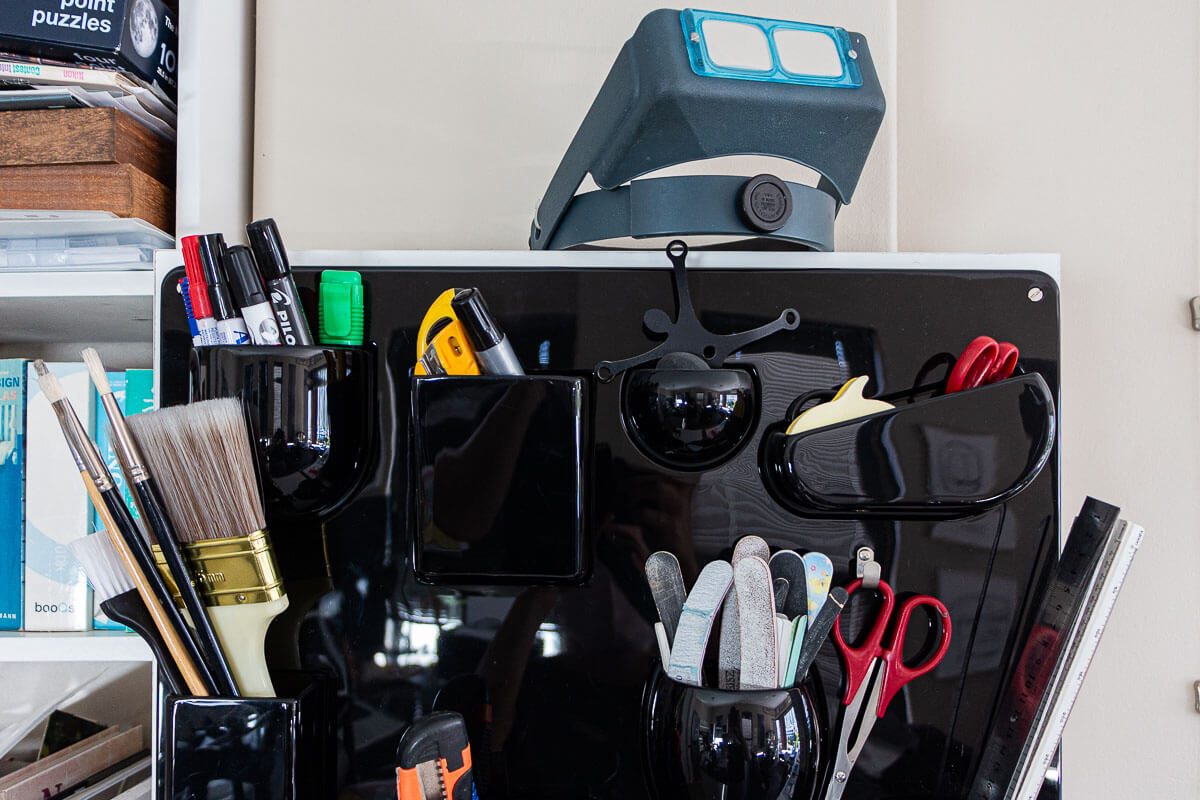
What are your aspirations for the future?
I would love to exhibit overseas. With my work, even though I share it online and have many interested customers through social media, it is always better if somebody can see it in real life.

